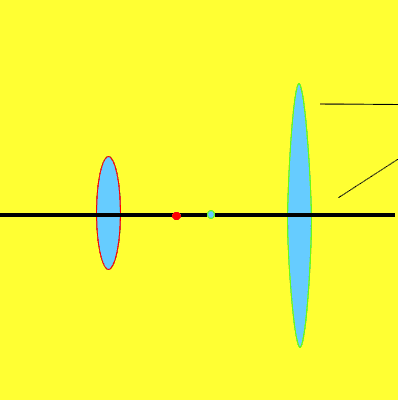An animation of how images are created in a telescope.

An animation of how images are created in a telescope.

|
The
telescope
|
|
| Telescopes can manipulate and magnify light images from distant galaxies. Large telescopes are housed in special buildings, known as observatories, and in isolated places to minimise light interference from nearby cities. |
|
| Telescopes do not only collect light. Some, such as the Parkes radio telescope shown on the right, collect radio waves from distant galaxies. Large parabolic dishes focus the incoming waves into a central point where it is collected and analysed. |
|
Other telescopes, such as the Hubble telescope pictured on the right, orbit around the Earth away from the interference of the atmosphere. Hubble can take pictures with incredible clarity and high resolution. Click to see one such image. Hubble has on board many other devices that capture and focus radiation such as, infrared and X-ray. The combination of these different techniques gives a complete picture of our stellar neighbours. Click to see an example of an image created by combining, infrared, UV radiation, infrared and visible light. |
 |
|
By combining two convex lenses,
a strong lens with a small focal length and a weak lens with a long
focal length, a simple telescope can be created.
The magnifying power of the simple telescope above can be calculated by the expression below, if the focal lengths of both lenses are known.
|
|